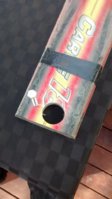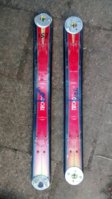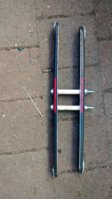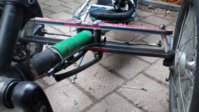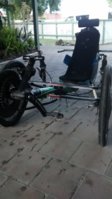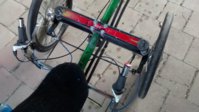- Beiträge
- 4.309
Hi. First of all let me apologise for writing in English! I hope that the readers of this thread can understand me. I am very interested in the suspension design of the Hi Trike, and wish to find out more about it. The one forum thread I have been following on the recumbent.com forum, has been fairly negative about the concept. One poster has been dissing the concept by saying that there will be braking problems causing the suspension to wind up, or roll over. Even suggesting that there should be track rods to stabilise the front end!
Anyway, I am looking at modifying my homebuilt trike with coroplast velomobile body. It currently has no suspension, and I am over the rough ride!
I would like to replicate the system at least in principal. The current idea is to use second hand snow skis as the basis for the leaf suspension.
I realize that this May not be as refined as the Hi trike suspension system, but will it work?
Any input will be appreciated! Thanks in advance, Rob
Dear @Freddyflatfoot , as my English ist not the best I hope that I chose the right title for your thread ...
Anyway, I am looking at modifying my homebuilt trike with coroplast velomobile body. It currently has no suspension, and I am over the rough ride!
I would like to replicate the system at least in principal. The current idea is to use second hand snow skis as the basis for the leaf suspension.
I realize that this May not be as refined as the Hi trike suspension system, but will it work?
Any input will be appreciated! Thanks in advance, Rob
Dear @Freddyflatfoot , as my English ist not the best I hope that I chose the right title for your thread ...


